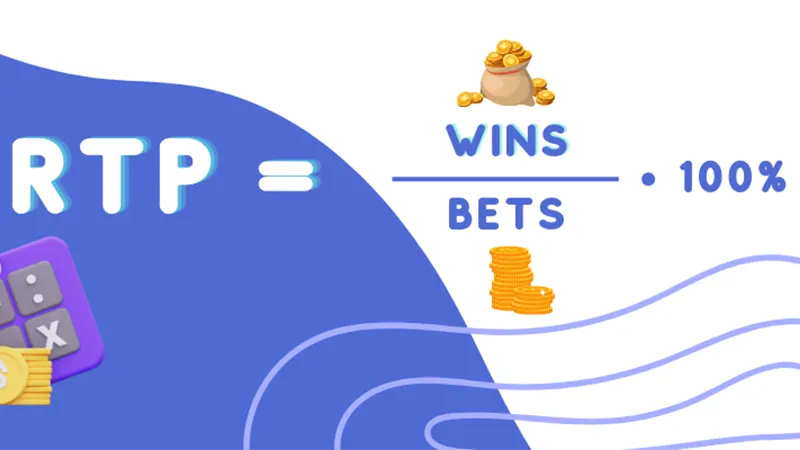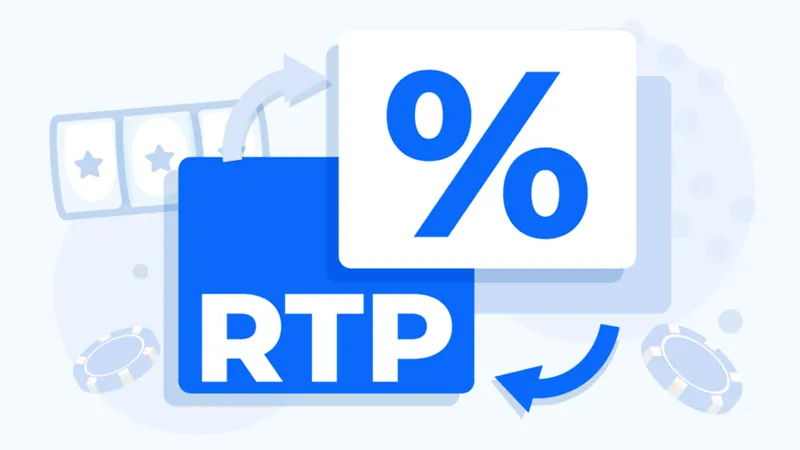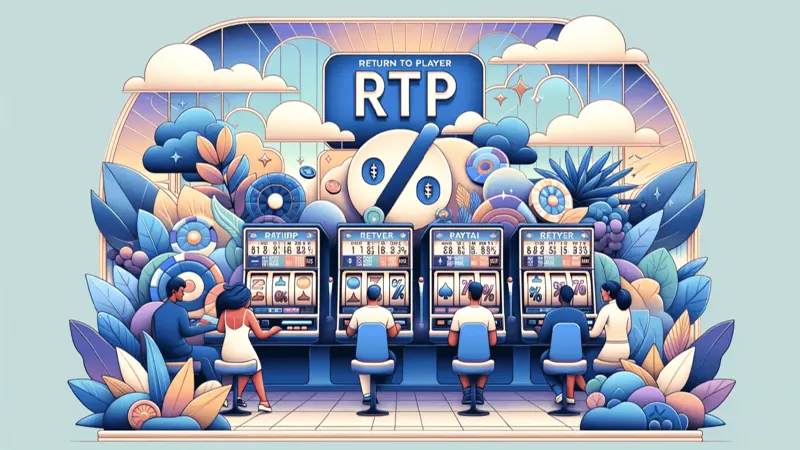The online casino gaming industry has experienced unprecedented growth in recent years, with millions of players worldwide engaging in digital gambling entertainment. However, despite this popularity, many players remain uninformed about one of the most crucial aspects of casino games: RTP (Return to Player). This lack of understanding often leads to poor game selection, unrealistic expectations, and ultimately, disappointing gaming experiences.
Understanding and properly utilizing RTP knowledge can transform your gaming approach, helping you make smarter decisions, manage your budget more effectively, and enhance your overall gaming experience. This comprehensive guide will demystify RTP and show you how to use this vital information to become a more strategic player.
1. What is RTP?
RTP, or Return to Player, represents the theoretical percentage of all wagered money that a casino game will return to players over an extended period. Essentially, it’s a mathematical calculation that indicates how much money players can expect to get back from their total bets in the long run.
To illustrate this concept, consider a slot game with a 96% RTP. This means that for every $100 wagered on this game over thousands of spins, the game is programmed to return $96 to players collectively, while the remaining $4 represents the casino’s profit margin.

It’s crucial to understand that RTP differs significantly from win rate and hit frequency. While RTP focuses on the long-term monetary return, win rate indicates how often you might win, and hit frequency shows how frequently winning combinations occur. A game might have a high RTP but low hit frequency, meaning you’ll win less often but potentially larger amounts.
Important caveat: RTP is calculated over millions of game rounds and doesn’t guarantee specific short-term results. Your individual gaming session might yield results that vary dramatically from the stated RTP percentage.
2. How RTP Affects Players
RTP directly impacts the amount of money you can expect to retain during your gaming sessions over time. Games with higher RTP percentages theoretically allow you to play longer with the same bankroll, as they return more money to players collectively.
Let’s compare two hypothetical slot games to demonstrate this impact:
Game A: 92% RTP
- For every $100 wagered, expect $92 returned long-term
- Casino keeps $8 per $100 wagered
Game B: 97% RTP
- For every $100 wagered, expect $97 returned long-term
- Casino keeps $3 per $100 wagered
Over extended play, Game B would theoretically preserve more of your bankroll, allowing for longer gaming sessions and potentially more entertainment value for your money.

The key takeaway is clear: prioritizing games with higher RTP percentages can help extend your playing time and minimize losses over the long term. This doesn’t guarantee wins in individual sessions, but it improves your overall mathematical position.
3. How to Read RTP When Choosing a Game
Understanding where to find and how to interpret RTP information is essential for making informed gaming decisions. Here’s your comprehensive guide to reading RTP data effectively.
Where to Find RTP
Game Information Sections: Most reputable online casino games display RTP information within their help or information menus. Look for buttons labeled “Info,” “Help,” or “Paytable” within the game interface.
Developer Websites: Game developers typically publish RTP information on their official websites. Companies like NetEnt, Microgaming, and Playtech maintain comprehensive databases of their games’ RTP percentages.
Casino Reviews and Guides: Reputable casino review sites and gaming guides often compile RTP information for popular games, making it easier to compare options before playing.
What RTP Ranges Mean
Understanding RTP ranges helps you categorize games based on their player-friendliness:
- Low RTP (Below 90%): These games should generally be avoided as they offer poor value to players. The casino’s advantage is significantly higher, making it difficult to maintain your bankroll.
- Medium RTP (90-95%): These games offer reasonable value and are acceptable for most players. While not optimal, they can still provide entertainment value with moderate risk.
- High RTP (95-99%): These represent the best value for players. Games in this range offer the most favorable mathematical conditions for extended play.
Watch Out: Multiple RTP Versions
Many modern casino games, particularly slots, offer multiple RTP versions. Game developers often create several configurations of the same game with different RTP percentages, allowing casinos to choose which version to offer.

For example, a popular slot might have versions with 96.5%, 94.2%, and 91.8% RTP. Always verify which version your chosen casino offers, and when possible, select casinos that provide the highest RTP variants.
Other Numbers That Matter
While RTP is crucial, combining it with other metrics provides a more complete picture:
- Volatility (Variance): Indicates how frequently and how much games pay out. Low volatility means frequent small wins, while high volatility means infrequent but potentially larger wins.
- Hit Rate: Shows how often winning combinations occur. A game might have high RTP but low hit rate, meaning wins are less frequent but larger.
Understanding these metrics together helps you choose games that match your playing style and risk tolerance.
4. How to Use RTP When Choosing a Casino Game
Applying RTP knowledge effectively depends on understanding your playing style and risk preferences. Here’s how to use RTP strategically when selecting casino games.
Applying RTP Based on Playing Style
Conservative/New Players: If you’re new to casino gaming or prefer cautious play, prioritize games with RTP of 95% or higher. These games offer better mathematical conditions for learning and extended play without rapid bankroll depletion.
Risk-Tolerant Players: Experienced players seeking large jackpots might accept lower RTP games if they offer significant payout potential. Progressive jackpot slots often have lower base RTP but offer life-changing win possibilities.
Standard RTP Ranges by Game Type
Different casino game categories typically offer varying RTP ranges:
Baccarat: 98.8-99.4% (depending on bet type) Blackjack: 99.3-99.8% (with optimal strategy) European Roulette: 97.3% American Roulette: 94.7% Slot Games: 85-99% (highly variable)

Practical Example: Comparing Two Slot Games
Game X: 94% RTP, Low Volatility
- Frequent small wins
- Steady gameplay
- Good for budget management
Game Y: 97% RTP, High Volatility
- Infrequent but larger wins
- More exciting but riskier
- Better for those seeking big payouts
Recommendation: Combine RTP analysis with volatility and hit rate information to select games that align with your entertainment preferences and bankroll management goals.
5. Common Misconceptions About RTP
Understanding RTP correctly requires dispelling several widespread misconceptions that can lead to poor gaming decisions.
Misconception 1: High RTP Equals Frequent Wins
Reality: RTP doesn’t indicate win frequency. A game with 98% RTP might pay out infrequently but with larger amounts, while a 94% RTP game might offer frequent small wins. RTP only shows long-term return percentage, not win patterns.
Misconception 2: RTP Guarantees Immediate Returns
Reality: RTP calculations are based on millions of game rounds. Your individual session might result in total loss or significant wins, regardless of RTP percentage. RTP is a long-term theoretical average, not a session guarantee.
Misconception 3: Casinos Manipulate RTP During Play
Reality: Reputable, licensed casinos cannot alter RTP percentages during gameplay. RTP is determined by game software and regulated by gaming authorities. However, casinos can choose which RTP version of a game to offer.
Misconception 4: RTP is Just Marketing
Reality: RTP is a legitimate mathematical calculation regulated by gaming authorities. Licensed casinos must provide accurate RTP information, and games undergo rigorous testing to ensure compliance with stated percentages.
Making RTP Work for You
Understanding and effectively utilizing RTP knowledge represents a fundamental shift from casual gambling to strategic gaming. By prioritizing games with favorable RTP percentages, you can extend your playing time, reduce long-term losses, and make more informed decisions about your entertainment budget.
Remember that RTP works in conjunction with other factors like volatility and House Edge to determine your overall gaming experience. While RTP provides valuable insight into long-term game performance, it should be combined with responsible gambling practices, proper bankroll management, and realistic expectations.
The key to successful casino gaming lies in making informed decisions based on mathematical realities rather than superstition or hope. As the saying goes, “Know the game you play, don’t let the game lead you!” By understanding RTP and applying this knowledge strategically, you can approach casino gaming with confidence and intelligence.
Whether you’re exploring the diverse gaming options at 82 Lottery or other online platforms, let RTP knowledge guide your choices. Play smart, play strategically, and most importantly, play within your means.


